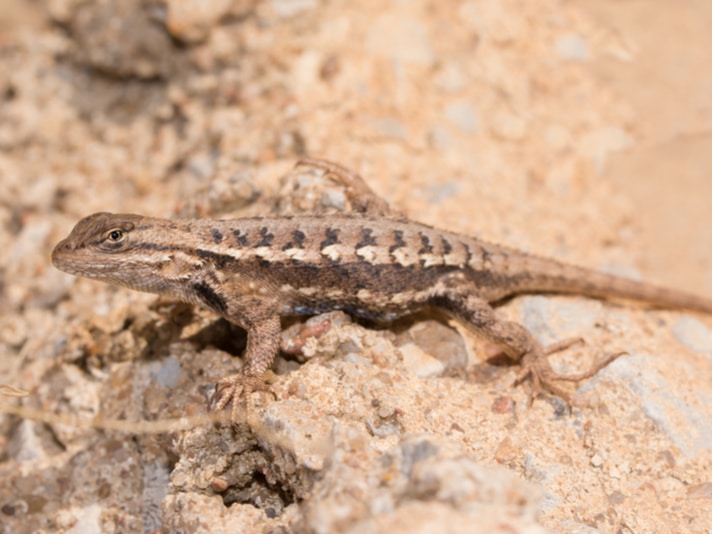Fence lizards have evolved to twitch and flee from fire ants over the course of the last 40 lizard generations.
Prior to the introduction of the invasive fire ant in the 1930s, eastern fence lizards (Sceloporus undulatus) relied on camouflage and sitting still when they encountered potential predators. With the invasive fire ant (Solenopsis invicta), this mode of behavior was ineffective, as the ants would swarm a lizard that stood still and would quickly kill the lizard.
This behavior has since evolved very quickly, according to a study published in the journal Global Change Biology. The lizards have adapted.
“We found that fence lizards follow predicted latitudinal clines in anti-predator behavior where fire ants have not yet invaded, from about New Jersey to northern Tennessee,” Tracy Langkilde, professor and head of biology at Penn State and senior author of the paper said in a statement. “They rely on camouflage more often at lower latitudes in the absence of fire ants.”
Herping the Western Fence Lizard at Aliso and Wood Canyons Wilderness Park
“But where fire ants are present, from central Tennessee south to coastal Alabama, that pattern reverses,” Langkilde said. “Sitting still and blending into the environment is very ineffective against fire ants, which quickly swarm and sting the lizards, paralyzing and killing them. Instead, as you move southward towards the point of first invasion of fire ants, where these invaders have been around for longest, these lizards are more likely to respond as most people would when attacked by fire ants; they twitch their bodies and use their hind legs to remove fire ants and/or flee from the attacking fire ants. This strategy helps them to survive these fire ant encounters.”
In their study, the researchers also noted that the hind limbs of the fence lizards had grown longer than the limb size of the lizards prior to the fire ant invasion. The longer limbs, the researchers note, allow them to remove the fire ants from their bodies more quickly and run away from ant danger faster. These changes happened over the course of the last 80 years, or 40 lizard generations, the study authors noted.
“We usually think of evolution happening over hundreds, thousands, or even millions of years so seeing that fence lizards can adapt to a threat like fire ants in such a complex way over a short time scale is interesting,” said Langkilde. “There is still a lot to learn about the broader mechanisms and consequences of adaptation to fire ants and other environmental challenges. Understanding how some species can adapt so rapidly, and the costs of doing so, will help us predict and manage our changing environment.”
The complete paper, “Presence of an invasive species reverses latitudinal clines of multiple traits in a native species” can be read at Global Change Biology.


